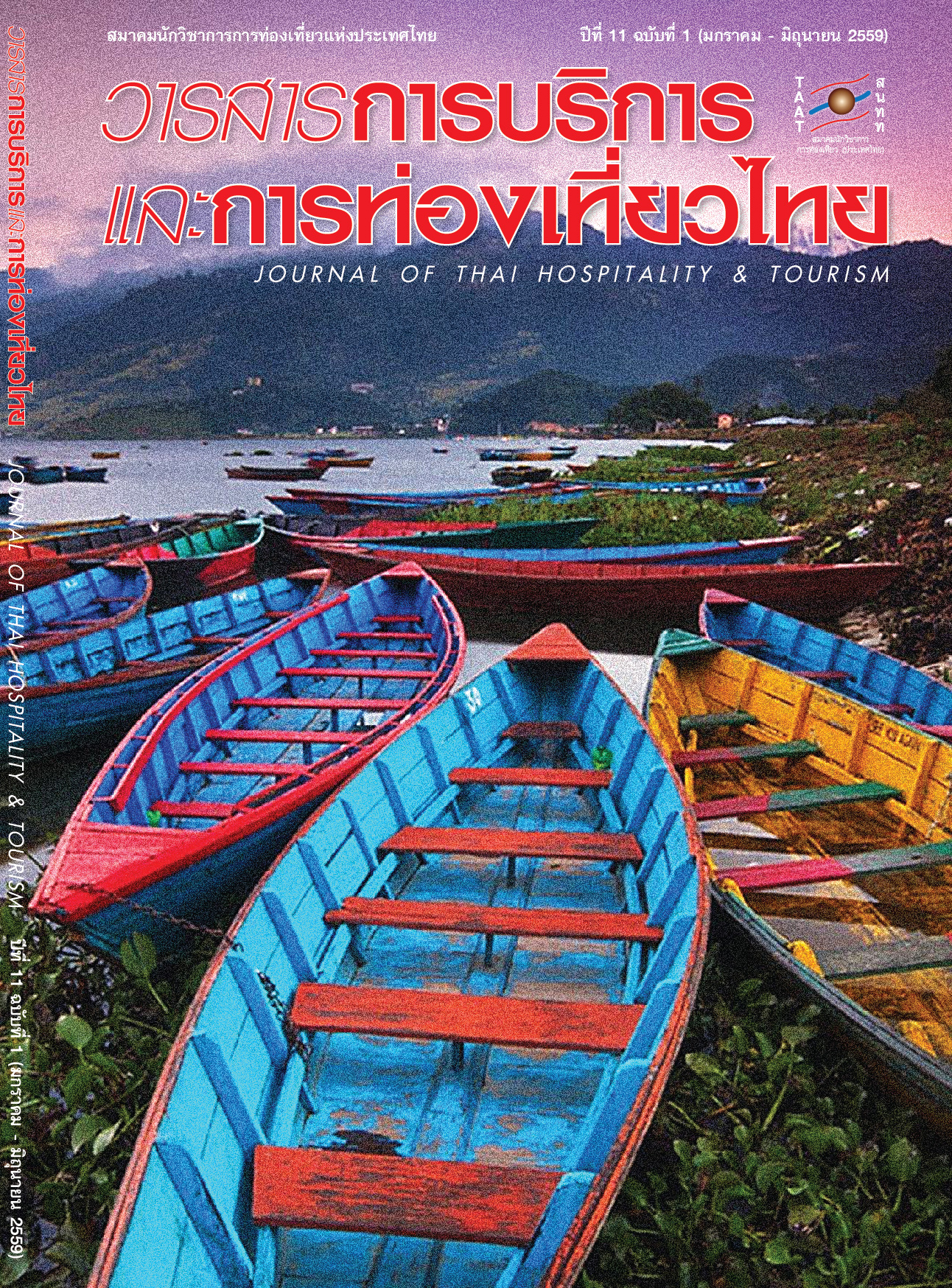What can Thailand Learn?: Lesson learned from Case Study of Tourism Development and Management in the Protected Area Sipadan Island, Malaysia
Main Article Content
Abstract
Marine tourism in the Andaman sea of Thailand after the event of Tsunami within the past 10 years has been growing rapidly both in term of number of tourists and basic infrastructure, particularly for the marine tourism in the marine national park areas. As a consequence many marine national parks in Thailand left facing with many problems that have come along with the rise in number of tourists, for example, Mu Koh Similan National Park, Hat Noppharat Thara – Mu Koh Phi Phi National Park, especially on environmental impact issues such as coral damage, littering, water pollution etc. These ongoing situations raise a concern from many stakeholders led by some well-known environmentalists from different university in Thailand. Which has urge the government to come up with solution and reform the marine tourism management system in Thailand at once. This article recognized the importance to look for lesson learned from Sipadan Island of Malaysia our neighboring country which has many similar characteristics in marine tourism resources like Thailand. In order to analyze the management of marine tourism at Sipadan Island in term of limit number of tourist, carrying capacity, proactive approach from past to present. Most importantly what can one learn and take from this lesson and use it to help find the balance between environmental conservation and managing marine tourism in a sustainable way for the future.
Article Details
References
[2] Mark, H. (2010). Marine Tourism and Small Island Development: Evidence from Mabul and Sipadan, Malaysian Borneo. In ISISA Islands of the World Conference: Bornholm.
[3] Musa, G. (2002). Sipadan: a SCUBA-Diving Paradise: An Analysis of Tourism Impact, Diver Satisfaction and Tourism Management. Tourism Geographies, 4(2), 195-209.
[4] Musa, G. (2003). Sipadan: an Over-exploited Scuba-diving Paradise? An Analysis of Tourism Impact, Diver Satisfaction and Management Priorities. Marine Ecotourism: Issues and Experiences, 122-137.
[5] Musa, G and Dimmock, K. (2012). Scuba Diving Tourism: Introduction to Special Issue. Tourism in Marine Environments: Special Issue, 8(1-2), 1-5.
[6] Rouphael, A. B. and Inglis, G. J. (2002). Increased Spatial and Temporal Variability in Coral Damage Caused by Recreational Scuba Diving. Ecological Applications, 12(2), 427-440.
[7] Sabah Parks. (2015). Retrieved April 1, 2015, from www.sabahparks.org
[8] Suwanand, Manas and others. (1998). Full Report: Project Study to Develop an Action Plan for Rehabilitation of Tourism Resources in the Conservation Areas (Chiangmai). Graduate School, Chiangmai University.
[9] Wikimedia.org. Retrieved April 1, 2015, from https://commons.wikimedia.org/wiki/File:Map_symbol-pin.svg.
[10] Wongwian, Kanuengporn and others. (2012). Strategic Development for Sustainable Ecotourism at Koh Samed Ranong Province. Journal of Thai Hospitality and Tourism, 7(2), 86-103.
[11] Worachananant S., Carter R.W., Hockings M. and Reopanichkul P. (2008). Managing the Impacts of SCUBA Divers on Thailand’s Coral Reefs. Journal of Sustainable Tourism, 16(6), 645-663. DOI: 10.1080/09669580802159677


